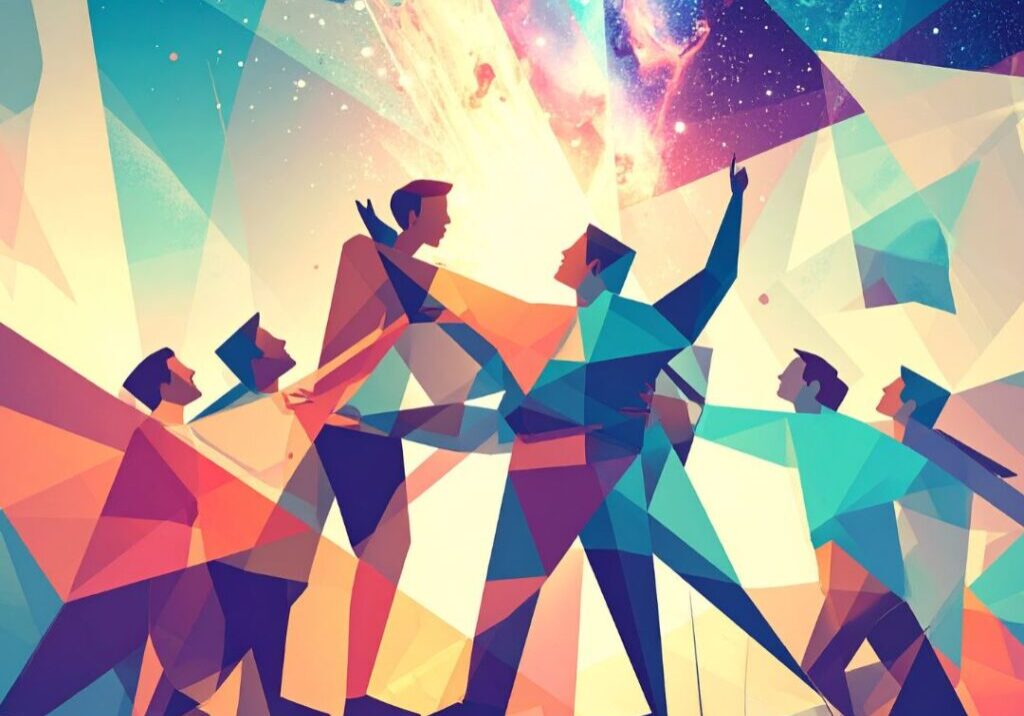Racism and the American Dream
For the past three months we have been quarantined due to a deadly Coronavirus; last week, a new virus was disclosed, the persistent virus of racism. The death of George Floyd by Derek Chauvin, a Minnesota police officer, was the last straw in a volatile political atmosphere. Chauvin worked for the police department for eighteen years and had eighteen complaints filed against him for derogatory remarks and demeaning behavior, among other things. Only two complaints were closed, after Chauvin was issued a reprimand. The Chauvin case sounds a lot like the sexual abuse in the Catholic Church where Bishops knew the problems and did no more than issue reprimands or simply move pedophile priests around: different systems, same modus operandi. Moreover, Chauvin worked for seventeen years as an off-duty police officer at a nightclub where George Floyd had also worked part-time as extra security. George Floyd was no stranger to Derek Chauvin. It is hard to say exactly what drove Chauvin to kill Floyd by asphyxiating him, kneeling on his neck, while another officer held down his legs and a third officer stood nearby. But the senseless tragedy of taking another man’s life demands justice.
I was in DC last weekend when the protests erupted over the deaths of George Floyd, Ahmed Arbery and Breonna Taylor, all black victims of police brutality. Their deaths were utterly tragic; I felt the protestors rage. I also felt as if history was repeating itself and that we have learned nothing from the past. I went to school in Newark, New Jersey shortly after the race riots of the 1970s where violence in the streets led to massive fires and looting of stores. In my twenties I was interested in the work of Malcom X and once took a course on Black revolution at the New School for Social Research in New York City where colleagues of Malcolm came to speak. I too was shocked by white supremacy and segregationists and found inklings of bigotry among family and friends who would say things like, “those people,” “the blacks are ruining our neighborhoods,” or “they are taking over our jobs” and “getting all the benefits without doing any real work.” I could never quite understand what provoked these statements or formed these ideas. My best friend in high school was black and I never thought for a second about the color of her skin. She was funny, smart and a great roommate at an all-girl’s boarding school. In suburban New Jersey, however, racism was embedded in the cultural genes of ethnic, middle-class [white] America and it quietly remains to this day.
Despite the efforts to instill diversity and inclusion in churches, schools and places of employment, the racist genes are entangled in American culture and it will take a lot more than protests and violence to effect real change. The root of the problem, in my view, lies in the deep connections between religion and scientific progress where race plays a critical factor. I am concerned that a blind eye with regard to race, religion and scientific progress will leave the root of the problem untouched; hence I want to try to examine the underlying connections here in a way that we can better understand the violence around us. Next week, I will outline a way forward through Teilhard’s vision.
Let me say from the start, that I am not a scholar of race but I have been writing on the topic of technology and religion for the last few years and just completed a book on the subject (Re-Enchanting the Earth: Why AI Needs Religion). There is a strong link between technology, race and religion and the way these are entangled with higher educations and politics. Last year I came across a very interesting article by Joel Dinerstein, “Technology and Its Discontents: On the Verge of the Posthuman,” (American Quarterly 58.3, 2006) that helped me better understand the thesis of David Noble who, in his book, The Religion of Technology, drew a strong connection between monastic Christianity, Adam as image of God, and technological progress.
Christianity is based on two fundamental tenets: the creation of [male] Adam in the image of God (Gen 1:27) and the command to have dominion over nature (Gen 1:26). The religion of technology (according to Noble) emerged from early medieval monks who resurrected the symbolic ideal of the original Adam. They believed that the pre-Fallen Adam was created immortal and in the divine likeness. The fall of Adam into sin due to the misbegotten male, Eve, was recoverable through individual piety and work in the “mechanic arts.” Since Eve was the source of the problem she could not be part of redemption. Men (only) could be co-workers with God in making over the planet to prepare for the second coming of Christ. This idea formed the “Adamic myth,” namely, that the white male is created in the image of God and can attain divine likeness through invention and discovery. Women and persons of color are incomplete and impure and thus cannot be part of divinization project.
The first intellectual figure to valorize the “mechanic arts” (i.e., technology) as a means to access the divine was an influential ninth-century Irish monk, John Scotus Erigena, who claimed that in the resurrection there will be only sex, namely, the male sex. Calling the mechanic arts “divinely inspired,” Erigena elevated practical activity to works of grace and helped masculinize carpentry and crafts. His writings provided an ideological foundation to the “medieval industrial revolution” of the twelfth-century homosocial monastic world. As Lewis Mumford showed in Technics and Civilization, the creation of watermills, windmills, the spring wheel, and the mechanical clock, along with innovative mechanisms for metal forging and ore crushing, created early systems of mass production that valorized order, rationality, and the mechanical system. What David Noble calls “the monastic mechanization of the crafts” found its sublime dynamic agent in waterpower and its sublime artistic form in the cathedrals that formed a sacred geography in Europe for five centuries.
The next conceptual element in the Adamic myth was provided by a twelfth-century Italian monk, Joachim of Fiore, who called for an avant-garde of “spiritual men” to act as agents of the second coming and “recover mankind’s original perfection.” His influential ideas were later taken up by Francis Bacon, whose widely read utopian work, The New Atlantis, published in 1627, imagined a society in which humankind became purified through rational order as applied to social organization; in other words, he imagined a monastic society on a national level. In his classic work The American Adam (1955), R. W. B. Lewis showed how American writers secularized the Puritan ideal of a new Jerusalem by sending male loners out to the frontier, where each could work for “a restoration of Adamic perfection, knowledge, and dominion, [and] a return to Eden.” For Oliver Wendell Holmes, only science could bring the “new man,” and such “restoration” would owe much to technological transformation.
In the mid-nineteenth century, technology and the new Adam came together at the level of national myth. In his brilliant synthetic work, America as Second Creation: Technology and Narratives of New Beginnings, David E. Nye found that nearly all Euro-American “foundational narratives” of nineteenth-century frontier settlement understood their right to the land, not as the New Jerusalem of the Puritans, but “as the technological transformation of an untouched space.” Whether by the axe, the mill, the canal, the steamboat, the railroad, the dam, or the steel plow, technological progress allowed the settlers to participate in what they called a “second creation.” The white settlers legitimated their presence from New England to California by putting forth technology as the agent that conquered the wilderness, thus eviscerating Native American (i.e., “first creation”) claims to the land, and giving the United States nothing less than “a national myth of origin.” Nye’s analysis reveals how the concept of the renewed Adam evolved from an individual, male ideal to a group (and then national) identity, as a result of frontier experiences. Instead of a transhistorical symbolic ideal of a materialist, autonomous male (Adam), a group of bodies laid now lay claim to a new land through their participation in its (technological) improvement. The United States as a corporate entity became the new Adam.
The fusion of progress, technology, and religion into a white mythology has been continually reinscribed in the history of the United States. The massive social transformations brought on by telegraph, railroad, and electricity created a sense that technology was “white magic” (to use Franco Moretti’s term), and “the awe and reverence once reserved for the Deity . . . [became] directed toward technology.” Recently, Brett Robinson described the link between religion and technology in his book Appletopia: Media Technology and the Religious Imagination of Steve Jobs. The transcendent design of the Apple store, he states, fits a historical pattern wherein the dominant technology of an age acquires a sacred status. In the Middle Ages, the great cathedrals were packed with people searching for an experience of transcendence; today the Apple store is packed with people looking for the same experience. Machines have changed our relationship to space and time. Cars, like computers, are built to transport the user, one moves the body and the other moves the mind. Robinson reaffirms what other scholars note, as new machines continually altered the workplace, and communication and transportation networks collapse time and space, modernity becomes associated with progress, one step closer to heaven: one’s life no longer resemble one’s parents’ or grandparents’ lives. Karl Marx summed up the transformative moment by calling it, “the sublime progress of the race.” Progress became associated with the divinization of the white male: women, non-whites and other impurities, such as homosexuals, were obstacles to American salvation and not part of the American destiny.
Americans have continued to participate in the Adamic myth by buying into the myth of progress under the guise of the “American dream.” It is interesting to note that from the 1950s through the 1970s nearly all of NASA’s key positions were filled by evangelical Christians. NASA’s director, Werner von Braun was an ex-Nazi rocket scientist, father of the U.S. space program, and born-again Christian. Von Braun said that the purpose of sending men into space was “to send his Son to the other worlds to bring the gospel to them” and to create a “new beginning” for mankind. In the 1950s, scientists and physicists believed new planets and space colonies might become a safety valve for a planet poisoned by nuclear winter. Physicist Freeman Dyson wrote the “Space Traveler’s Manifesto” in 1958, and he supported the development of nuclear energy to secure a power source for a starship that was mankind’s best chance to survive the apocalypse. The claim was supported by Rod Hyde, NASA’s group leader for nuclear development: “What I want more than anything is to get the human race into space . . . It’s the future. If you stay down here some disaster is going to strike and you’re going to be wiped out.” Directed by the “spiritual men” of NASA, humanity would restart on another planet so that human beings could still be headed for a redemptive future, even as they left behind the mess of the impure. It is ironic that Elon Musk’s Space X was launched shortly after the death of George Floyd, seemingly unrelated events and, yet, in the Adamic American myth, virtually seamless.
Technology as an abstract concept functions as a white mythology. Yet scholars of race rarely engage technology as a site of dominant white cultural practices (except in popular culture), and scholars of technology often sidestep the subtext of whiteness within the myth of technology. The development of new technologies, however, maintains two crucial Euro-American myths: (1) the myth of progress and (2) the myth of white, Western superiority and the persistent need to keep America pure. Dinerstein claims that technology drives the American dream because technological progress is American theology. The line between God and machine is blurred or simply absent. It is not God who insures the American future but new technologies: Apple, Microsoft, Google, the FAANG stocks, are the hope of the American dream. In this techno-Adamic myth, it is not social justice or equitable economic distribution that will reduce hunger, greed, and poverty, but fables of abundance and the rhetoric of technological utopianism. The United States is in thrall to “techno-fundamentalism.”
The techno myth hides racism under the form of progress but racism is inscribed in the making of the American dream, translated as wealth, success and power. It is not difficult to see how consumerism and the Adamic myth are deeply intertwined. Technological progress is the telos of American culture; the perfectibility of man through the application of reason, literally, a man-made future that will be a “more just, more peaceful, and less hierarchical republican society based on the consent of the governed.” This Adamic myth stands behind the slogan, “Make America great again.” Technological progress functions as a prop for a muted form of social Darwinism, expressed as “might makes right,” or “survival of the fittest.” The techno-cultural matrix, the divinization of the male Adam, consists of progress, religion, whiteness, modernity, and the future. This matrix reproduces as an assumed superiority over societies perceived as static, primitive, passive, gay, communist, terrorist, or fundamentalist. And it does not seem to be changing any time soon.
In fact, for the last two centuries, technology has piggybacked onto social progress by creating the rush of change without social improvement. From the internet to the smart phone and self-driving cars, technology has driven American culture at a frenetic pace. It also drives American higher education. The costly ticket of a four-year college degree is the entrance fee into the priesthood of progress, the ability to be become God-like by using one’s talents to achieve status, wealth and power. The areas of science, technology, engineering and mathematics now govern the financial future of colleges and universities, to the extent that some schools are discontinuing course offerings in the humanities, including theology and philosophy. Higher education, regardless of a school’s religious affiliation, has bought into the Adamic myth lock, stock and barrel. The perversion of Christian ideals holds together technology, consumerism and neoliberal economics in the form of progress, so that even “spiritual but not religious” becomes another form of secular divinization.
In short, racism has little to do with human dignity and everything to do with the myth of the white, male Adam. Sad to say but religion is at the heart of the racist problem, and the onus of the problem falls squarely on the shoulders of Christianity. Both Catholic and Protestant Christians have had every opportunity to move beyond the Adam myth, as Teilhard de Chardin tried to show in his many writings, but have resisted the invitation to change. Yet without rewriting the script of Christianity in the key of Big Bang history, evolution and complexity, racism will continue unabated. There will be another white, male racist cop who will kill an unarmed black man for no other reason than his skin color. Religious folk may raise their flags of protest but this too is insufficient for real change. Nothing less than a complete God revolution is needed if we are to turn in a new direction. If religion is the heart of the problem, then it must be the heart of the solution and Christians need to wake up to a new type of God in evolution.
 View print-friendly version
View print-friendly version
12 Comments
Related Posts

Love and Political Order: The Evolutionary Path to Unity
We live in an age of fragmentation. Politically, we witness the hardening of tribal identities and nationalist divisions. Ecologically, we confront a world torn between exploitation and preservation. Socially, we…


I fear we over complicate issues of race and look for the grand solution when in fact its within the grasp of all of us. The only way people change for the better is through relationships with other humans.When I and my wife were newly married we became involved with the African-American community in our home town through a local non profit which was building affordable housing for families of color in our predominantly white suburban community. We worked hand in hand together and produced with community members a product that all were proud of. True and lasting friendships were forged and my wife went on to have a career in the field of affordable housing nationally. I have saught as an attorney to work on issues of justice since, both locally and internationally. It is in the relationships that we have had with minorities that we take the greatest pride. In them we see the faces of God.